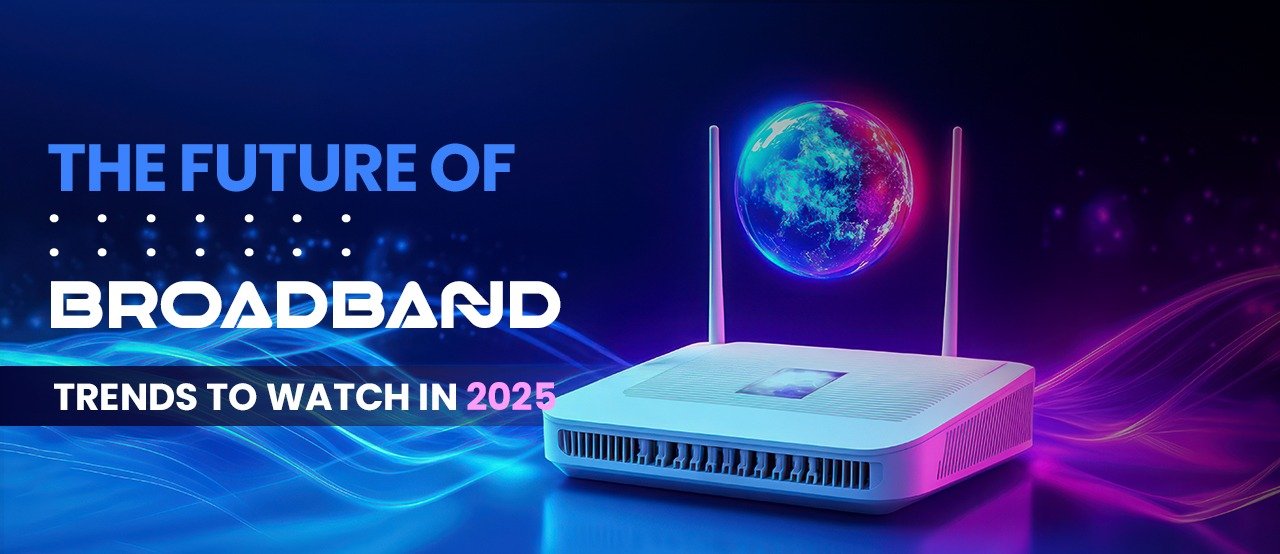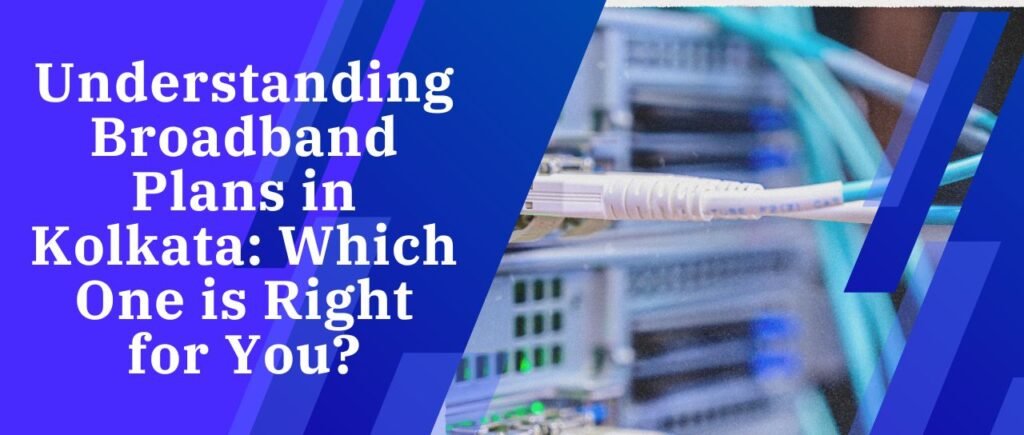The internet is an integral part of our daily lives, shaping the way we work, learn, and connect. With the rapid pace of technological advancements, the broadband industry is on the brink of significant transformation. But what’s next? What emerging trends will redefine how we experience the internet in 2025?
This blog explores the game-changing innovations and trends set to impact the broadband sector in the near future. From revolutionary connectivity technologies to sustainability initiatives, here’s everything you need to know about the future of broadband.
The Move Toward Ultrafast Broadband
The Era of Multi-Gig Internet Speeds
Broadband providers are racing to roll out multi-gig internet speeds, with speeds surpassing 1 Gbps becoming the new standard. By 2025, we can expect residential, business, and smart city connections to feature ultra-high-speed internet powered by technologies like fiber-optic infrastructure.
Case in point? Fiber-to-the-Home (FTTH) adoption rates are climbing steadily, with locations like South Korea, Japan, and parts of Europe leading the charge. For consumers, this means seamless gaming, 8K streaming, and reduced lag in video conferencing.
Key takeaway: Ultrafast broadband is poised to eliminate bottlenecks in connectivity, enhancing productivity, entertainment, and overall digital experiences.
Satellite Internet Takes Center Stage
Expansion of Low Earth Orbit (LEO) Satellites
Satellite internet is evolving beyond what was traditionally considered a rural connectivity option to becoming a mainstream solution. Companies like SpaceX (Starlink), Amazon (Project Kuiper), and OneWeb are deploying Low Earth Orbit (LEO) satellite constellations.
These satellites provide faster speeds and lower latency compared to traditional satellites in geostationary orbit. By 2025, LEO satellites are expected to play a key role in connecting remote and underserved areas, opening up reliable internet access to millions.
Real-world impact: Better accessibility in developing nations and isolated locations, leveling the playing field for global opportunities in education, healthcare, and business.
5G and the Dawn of 6G
Enhancing Mobile Broadband
5G technology has been a buzzword for years, but its full potential is only beginning to unfold. By 2025, widespread 5G adoption will bring higher bandwidth, ultra-low latency, and more reliable connections.
Even more exciting? Research and development for 6G networks is already in progress, with predictions of rollouts beginning in the 2030s. Offering theoretical speeds up to 100 times faster than 5G, 6G could power revolutionary technologies like AI-driven networks and holographic communications.
Why it matters: Future mobile broadband networks will elevate everything from autonomous vehicles to immersive augmented reality (AR) experiences.
Sustainability in Broadband Infrastructure
Green Technologies and Practices
Environmental concerns are driving a shift toward sustainable broadband practices. By 2025, providers will increasingly adopt energy-efficient hardware and renewable energy sources to power data centers and networks. Initiatives like “infrastructure sharing” between competing companies are also on the rise to minimize energy consumption.
Example: Telecom giants such as Vodafone are investing in solar-powered networks, while Google aims to operate solely on carbon-free energy by 2030.
Outcome: Sustainable practices in broadband infrastructure will reduce the environmental footprint of the digital world, aligning the industry with global sustainability goals.
AI-Driven Network Optimization
Smarter Broadband for Smarter Usage
The integration of AI into broadband management is transforming how networks operate and serve customers. AI algorithms can predict network congestion, improve fault detection, and enable self-healing in systems without human intervention.
Additionally, AI-driven customer experiences, such as personalized bandwidth recommendations and troubleshooting bots, are becoming standard. By 2025, expect AI to further enhance efficiency and user satisfaction in broadband services.
The Push for Universal Connectivity
Bridging the Digital Divide
Universal internet access remains a critical goal for governments and global organizations alike. By 2025, increased investments in universal broadband initiatives aim to drastically reduce the digital divide.
One example is the UN’s Broadband Commission for Sustainable Development, which seeks to make affordable broadband available to everyone by 2030. Public-private partnerships are also funding infrastructure in rural and disadvantaged communities.
What this means: Greater access to broadband will provide more equitable opportunities in education, employment, and healthcare for underserved populations.
The Rise of Smart Homes and IoT
Internet-Connected Everything
The Internet of Things (IoT) is set to revolutionize broadband usage by creating hyper-connected environments. Smart homes equipped with internet-enabled devices like thermostats, security cameras, and appliances are already gaining traction.
By 2025, the number of connected devices per household is expected to increase exponentially, demanding more reliable and high-speed broadband to keep them seamlessly connected.
Impact: The broadband infrastructure will evolve to support smarter, more interconnected lifestyles, bridging the gap between convenience and technology.
Cybersecurity Challenges and Innovations
Securing Next-Gen Networks
With the expansion of broadband capabilities and connected devices, cybersecurity risks are expected to rise. Addressing these challenges will require bolstered network security protocols, data encryption, and end-user education.
For instance, enhanced Zero Trust models and AI-based cybersecurity solutions will become prominent in identifying and preventing threats in real-time.
What’s ahead: Providers will need to balance offering faster, more comprehensive services while prioritizing the protection of consumer data in an increasingly interconnected world.
Broadband is not just about internet speeds anymore; it’s a key enabler of innovation and global inclusivity. Whether it’s smarter homes, sustainable practices, or universal connectivity, the trends shaping broadband in 2025 promise to redefine the digital landscape.
Want to stay ahead of these changes? Explore our latest reports and resources to prepare for what’s next in broadband innovation. You can take the cheapest broadband plan in Kolkata from Aventuretelecom.



